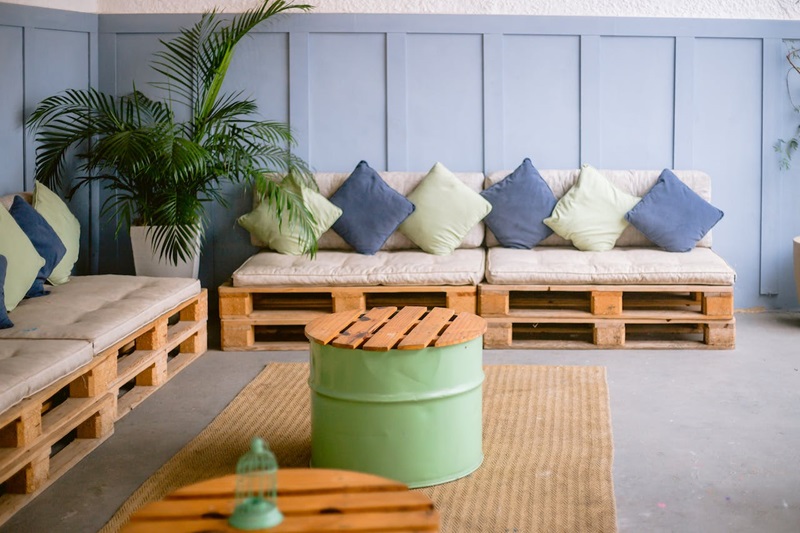In recent years, there's been a decidedly compelling shift in the world of home décor and furniture design. Have you ever paused to wonder where your flat-pack furniture sourced its materials? Or perhaps how we could create furnishings with sustainability in mind? Is it plausible that our aesthetic preferences could align with our environmental responsibilities? Well, the answer is, absolutely yes! This blog post delves into the fascinating rise of sustainable furniture made from recycled pallets. A revolution that not only piques aesthetic interest but also satisfies our eco-conscious spirit, recycled pallet furniture is transforming the design landscape.
 |
| Recycled Pallets |
Witnessing an increase in environmental awareness around the globe, it's right to question how our furniture choices impact the earth. Design enthusiasts and planet devotees alike are increasingly making choices that embody the essence of eco-friendliness and sustainability. Among all the alternatives that spurred during this ‘Green Revolution,’ recycled pallet furniture stands out with its unique charm and ethical credentials. This article investigates just how this unassuming wooden wonder is making waves in the furniture industry.
What Is Pallet Furniture, and What Makes It Unique?
Pallet furniture is, quite simply, furniture made from recycled wooden pallets. These humble materials typically used to transport goods have found new life in the form of chic, rustic, and bespoke furniture pieces. What distinguishes pallet furniture from other sustainable options is not only its raw charm but also its potential for customization and unique cost-effectiveness. It's a brilliant solution to do more with less, repair instead of replace and, in essence, reduce our environmental footprint.
The Birth and Rise of Pallet Furniture Movement
If you've been keen on interior design trends in recent years, you would have undoubtedly noticed the pallet furniture's steady rise. So where did this trend originate, and why did it become so popular? Driven by a rise in eco-consciousness and the desire for unique, personalizable furniture designs, the pallet revolution soon caught on among home décor aficionados. The introduction of pallet furniture into high-end design showcases and architectural landscapes also aided in its explosion popularity.
The Environmental Impact
We’re often advised to reuse, reduce, and recycle. But when we view this mantra from the perspective of home decor and furniture design, how effectively does it translate? When we focus on pallet furniture, this green slogan finds perfect expression. Pallet furniture embodies the principles of sustainability because its production involves recycling industrial wood waste, reducing landfill contributions, and reusing materials multiple times.
It's All About Customization
One undeniable allure of pallet furniture stems from its endless customization possibilities. Think beyond a basic table or chair; with recycled pallets, the scope is vast! From boho-chic bed frames, rustic patio swings, to artful vertical gardens, there's a wealth of potential hidden in each pallet. They open the doors to an intriguing world where creativity meets sustainability.
Making The Move: Switching To Pallet Furniture
Transitioning to pallet furniture is not only good for the environment but also your pocket! Pallet furniture is considerably affordable, making it a great option for those seeking stylish, sustainable, and budget-friendly alternatives.
The Cons of Pallet Furniture
Like any material, pallet furniture also has its disadvantages. Cons could include the need for thorough checks for pests or chemical treatments on the pallets. It requires some work to transform a rough pallet into a smooth, splinter-free piece of furniture. However, with the right precautions and treatment, these barriers are surmountable.
Conclusion:
Recycled pallet furniture symbolizes a shift toward mindful consumption and an ecological consciousness in design spaces. Though it may come with its own set of challenges, its benefits are undeniably considerable. In the end, each piece tells a story - a tale of transformed material that, if not put to this inventive use, may have contributed to waste. It’s an offering that allows design enthusiasts to make a tangible contribution to the preservation of our environment. A new way to imbue our homes with character while also staying aware of our footprint.
